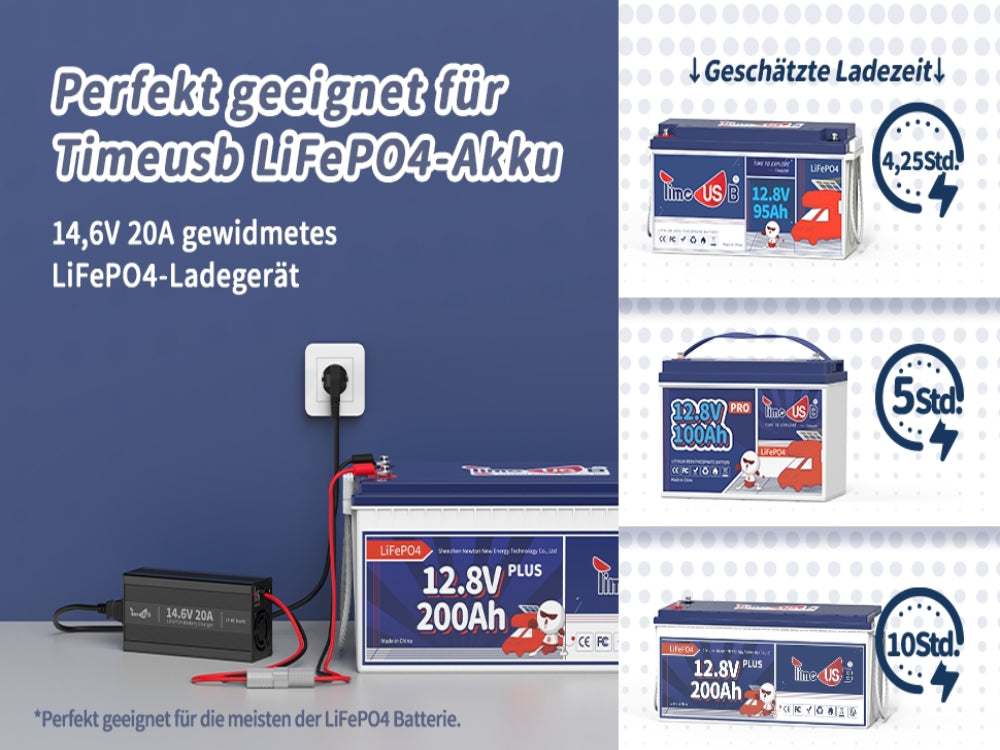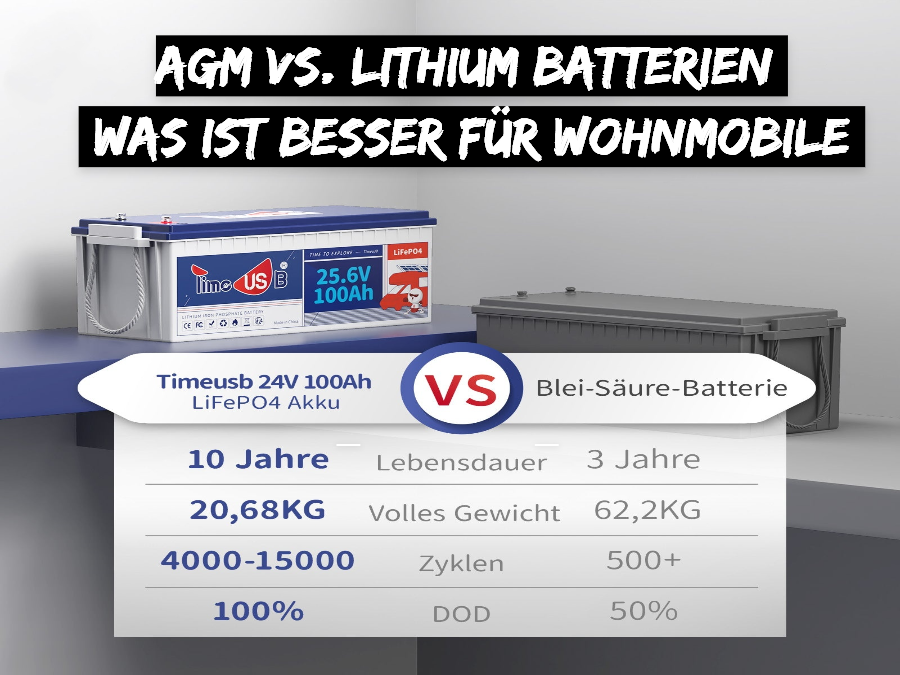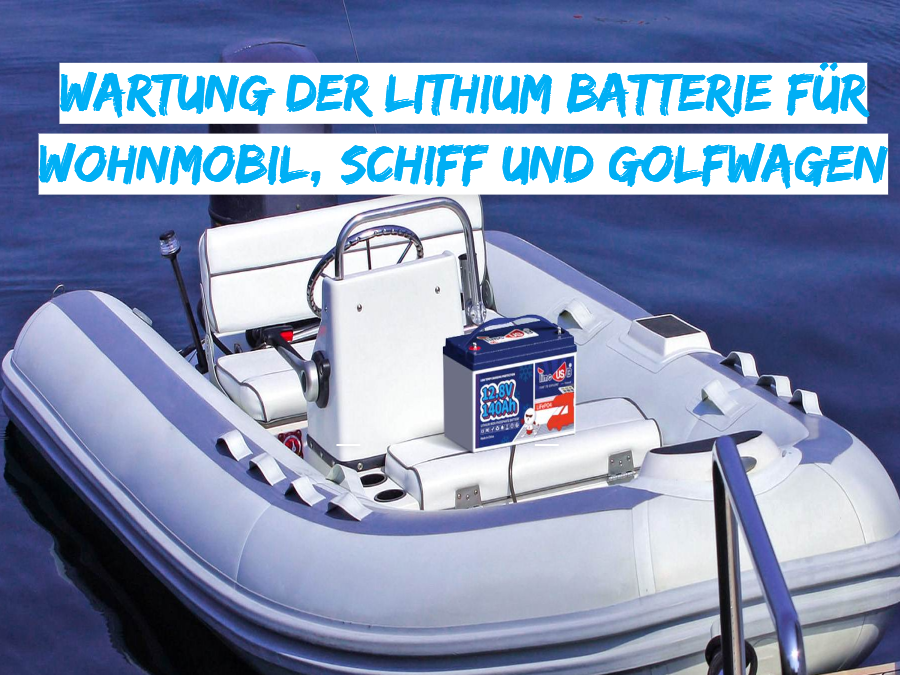Why is my RV/Marine lithium battery not charging?

Lithium batteries are gaining popularity in the recreational vehicle (RV) and marine industries due to their superior performance, lightweight design, and longer lifespan. However, charging issues are not uncommon and can confuse and frustrate the owner. In this article, we'll look at some common reasons why your RV or marine lithium battery isn't charging and provide workable solutions to fix the problem.
How are RV/Marine lithium batteries charged?
Lithium batteries are charged through a process called lithium-ion charging. When an external power source, such as a charger, is connected to the battery, current flows in the opposite direction to the discharging process. Lithium ions move through an electrolyte solution from the positive electrode (cathode) to the negative electrode (anode). This causes the anode to absorb the lithium ions, creating lithium compounds. Charging is complete when the anode is fully saturated with lithium ions. It is important to note that lithium batteries require special charging protocols and chargers tailored to the lithium chemistry to ensure safe and efficient charging.
Why is my RV/Marine lithium battery not charging?
Below are 4 main reasons why your lithium battery is not charging.
1. Insufficient power supply
One possible reason your RV or marine lithium battery won't charge is inadequate power. Before assuming the battery itself is at fault, check to see if your power source(s) are working properly. Make sure your generator, solar panels, or shore connection are providing enough power to charge the battery. Faulty or damaged wiring, blown fuses, or tripped circuit breakers can also affect charging.
Solution: Thoroughly check all power sources and connections and correct any problems promptly. Contact a professional electrician if necessary.
2. Low battery voltage or low state of charge (SOC)
Another common cause of a lithium battery not charging is that it is too deeply discharged or has an extremely low state of charge (SOC). Lithium batteries, like any other, require a minimum voltage to initiate charging. If the battery voltage has dropped below a certain threshold, the charger may not recognize that the battery needs to be charged.
Solution:Use a battery monitoring system (BMS) or compatible voltmeter to determine the battery voltage. If the charge level is too low, consider jump-starting the battery to bring it to a level that the charger can detect and begin charging. Make sure you follow the manufacturer's instructions and guidelines.
3. Battery protection mechanisms
Lithium batteries have various protection mechanisms to prevent damage and ensure safety during charging. These may include overcharge protection, overcurrent protection or overtemperature protection. If any of these protection functions are triggered, the battery's charging process will be interrupted.Some high-quality, improved LiFePO4 lithium batteries such as Timeusb 12V 140Ah In addition to the regular protection against overheating, overcharging, overcurrent, deep discharge and high temperature, they also have under-temperature protection.
Solution: If the battery does not charge, check if any of the protection mechanisms have been activated. Allow the battery to cool down if it has been in a hot environment, or make sure the charger is compatible with the battery's specifications. Consult the battery manufacturer's documentation or contact their support for further assistance.

4. Faulty or incompatible charger
Using an incorrect or faulty charger is a common problem that prevents lithium batteries from charging properly. Chargers designed for lead-acid batteries may not be compatible with the specific charging requirements of lithium batteries.
Solution: Make sure you have a charger specifically designed for lithium batteries. Follow the battery manufacturer's guidelines or consult an expert to select the appropriate charger that matches your battery's voltage and charging specifications.
If you are unsure, take a look at the table below.

Best practices to avoid problems when charging lithium batteries
To avoid problems when charging lithium batteries, it is important to follow some best practices:
- Use a charger specifically designed for lithium batteries: Lithium batteries have different charging requirements than lead-acid batteries. Using a charger designed for lithium batteries ensures optimal charging performance and prevents possible problems.
- Make sure you have sufficient power supply: Make sure the charger's power supply is sufficient to meet the battery's charging requirements. Insufficient power supply may limit charging and result in slow or incomplete charging.
- Check the battery voltage and charge level: Before charging, check the battery voltage with a multimeter. If the battery voltage is too low (below a safe limit), it may be necessary to jump start the battery or use a special charger to recharge it.
- Pay attention to activated protection mechanisms:Lithium batteries have built-in protection mechanisms to prevent overcharging, overdischarging and other potential problems. If certain protection mechanisms are activated due to an abnormal situation, the battery may not charge properly. In such cases, refer to the battery manual or contact the manufacturer for assistance.
- Avoid using faulty or incompatible chargers: Using chargers that are faulty or not designed for lithium batteries may cause charging problems or even damage the battery. Always use chargers recommended by the battery manufacturer.
- Proper storage of the battery:To ensure the optimal life and performance of lithium batteries, it is important to store them properly This includes storing the batteries in a cool, dry place, away from extreme temperatures and humidity. It is also important to avoid physical damage by handling the batteries with care and not dropping them. By following these best practices, users can maintain the integrity of their lithium batteries and ensure that they remain in optimal condition over time.
By following these best practices, you can minimize the likelihood of charging problems with your lithium battery and ensure its optimal performance and longevity.
Conclusion
Dealing with a non-rechargeable lithium battery in your RV or boat can be very inconvenient, but it's important to understand the causes and their solutions. Check your power sources, check the battery voltage and SOC, understand the battery protection features, and choose a compatible charger to improve charging. If the problem persists, you should seek professional help for proper diagnosis and resolution. Remember, proper maintenance and care of your lithium battery will extend its life and ensure trouble-free operation for many adventures to come.




